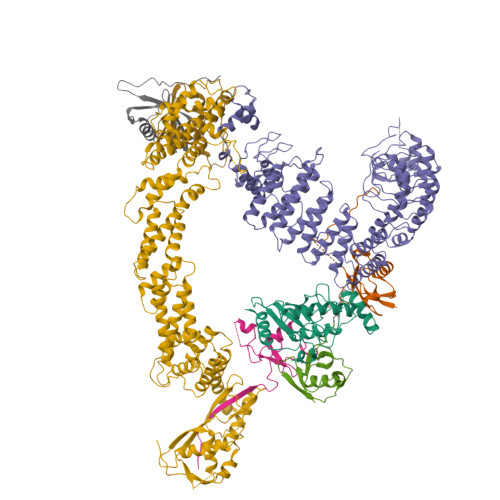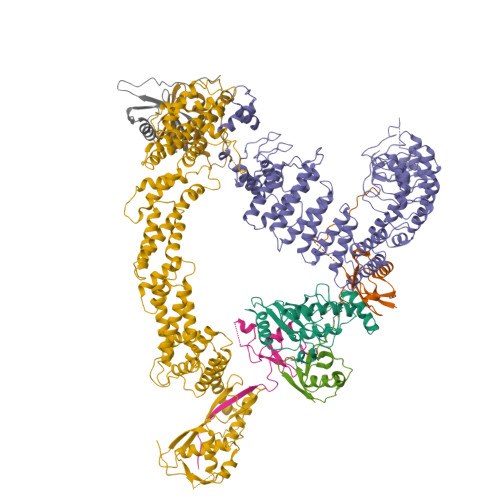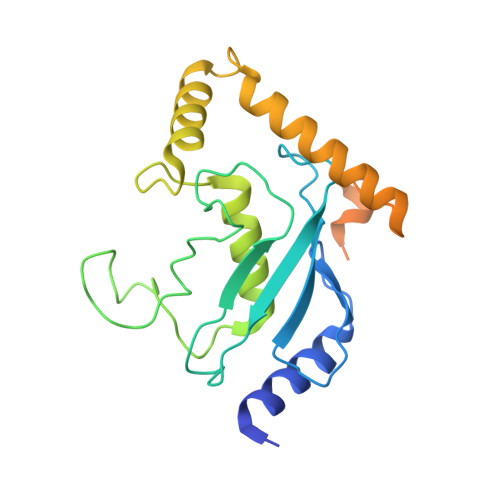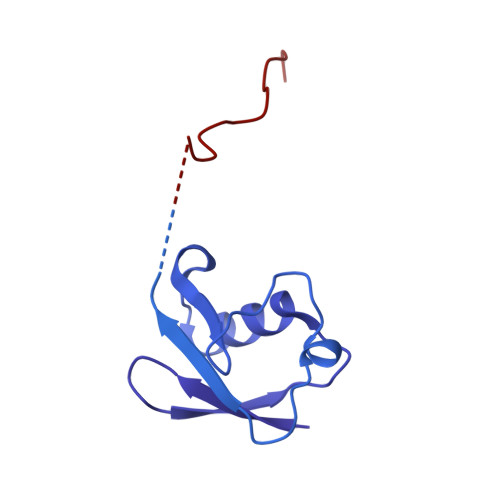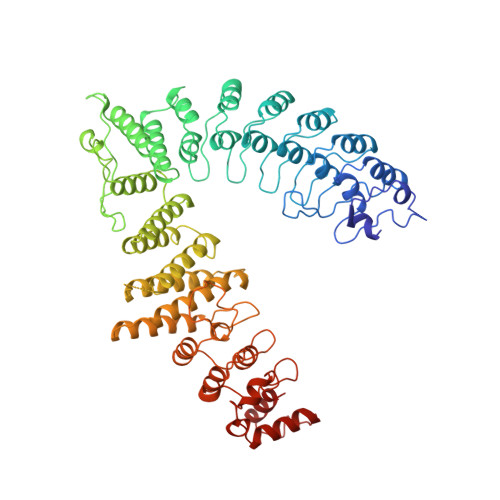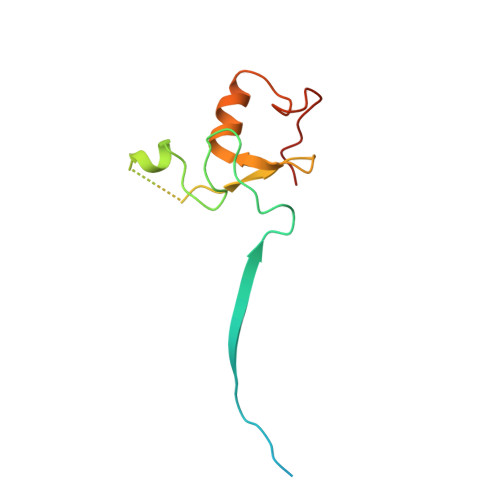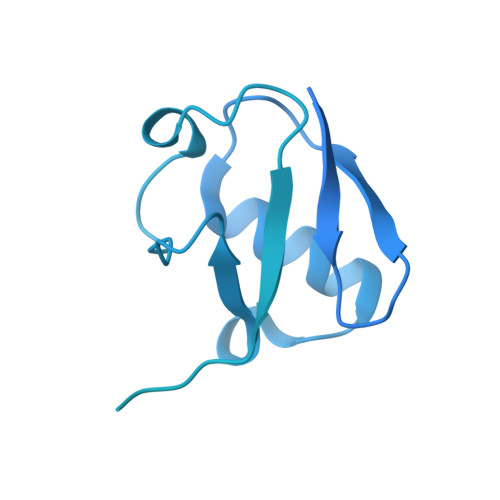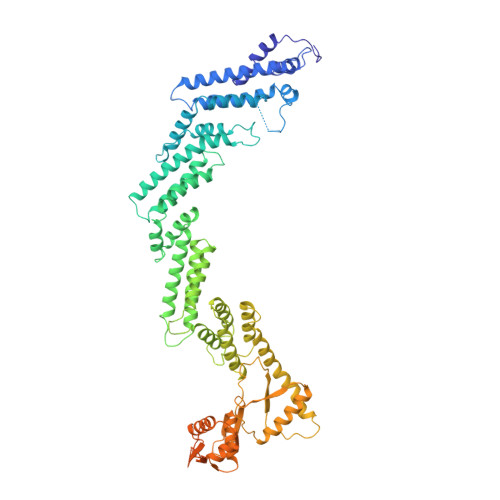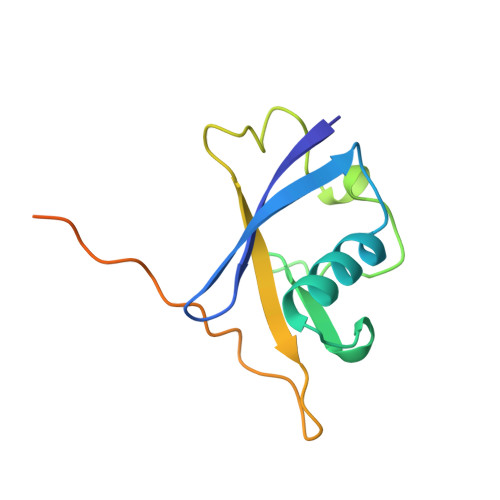Mechanism of millisecond Lys48-linked poly-ubiquitin chain formation by cullin-RING ligases.
Liwocha, J., Li, J., Purser, N., Rattanasopa, C., Maiwald, S., Krist, D.T., Scott, D.C., Steigenberger, B., Prabu, J.R., Schulman, B.A., Kleiger, G.(2024) Nat Struct Mol Biol 31: 378-389
- PubMed: 38326650
- DOI: https://doi.org/10.1038/s41594-023-01206-1
- Primary Citation of Related Structures:
8PQL - PubMed Abstract:
E3 ubiquitin ligases, in collaboration with E2 ubiquitin-conjugating enzymes, modify proteins with poly-ubiquitin chains. Cullin-RING ligase (CRL) E3s use Cdc34/UBE2R-family E2s to build Lys48-linked poly-ubiquitin chains to control an enormous swath of eukaryotic biology. Yet the molecular mechanisms underlying this exceptional linkage specificity and millisecond kinetics of poly-ubiquitylation remain unclear. Here we obtain cryogenic-electron microscopy (cryo-EM) structures that provide pertinent insight into how such poly-ubiquitin chains are forged. The CRL RING domain not only activates the E2-bound ubiquitin but also shapes the conformation of a distinctive UBE2R2 loop, positioning both the ubiquitin to be transferred and the substrate-linked acceptor ubiquitin within the active site. The structures also reveal how the ubiquitin-like protein NEDD8 uniquely activates CRLs during chain formation. NEDD8 releases the RING domain from the CRL, but unlike previous CRL-E2 structures, does not contact UBE2R2. These findings suggest how poly-ubiquitylation may be accomplished by many E2s and E3s.
Organizational Affiliation:
Department of Molecular Machines and Signaling, Max Planck Institute of Biochemistry, Martinsried, Germany.








